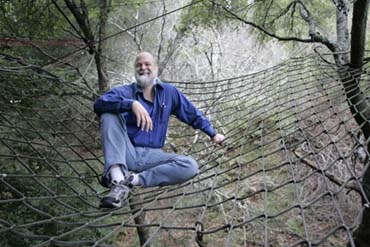Ultracapacitors and tiny airplanes

I bought six of these wonderful little radio controlled airplanes, the Air-Hog Aero Ace.
They are barely bigger than my hand, and fly for 10 minutes on a charge. Great fun, although I am a really lousy pilot, having had no time to practice. The foam body crashes into things and simply bounces back unharmed.
And they are only $30 each, complete with the radio control transmitter.
What makes them possible is lightweight lithium ion batteries (probably lithium polymer batteries, but I have not found any data on the batteries yet). With energy densities of 166 milliwatt-hours per gram these tiny batteries can power both electric motors and the radio control receiver in the plane for longer than I can keep the plane in the air (did I mention I was a lousy pilot?).
Lithium-sulfur batteries might be even better, at 280 milliwatt-hours per gram, but I haven't seen any 5 gram lithium-sulfur batteries yet.
But batteries are not perfect. They can only be charged 500 to 1,000 times before they are no longer useful, and they take minutes to charge. What if we could have these energy densities in a capacitor? Something that could charge in a second or two, and never wear out?
Joel Schindall at MIT thinks he can raise the energy density of ultracapacitors from 3 or 4 milliwatt-hours per gram to 300 or even 400 milliwatt-hours per gram. He wants to use carbon nanotubes growing out of metal foil like fur on a scared cat.
An ultracapacitor is normally made from two metal foils covered with a fine dust made of activated carbon, in an electrolyte of acetonitrile or propylene carbonate, and separated by a porous insulator. By replacing the carbon powder with carbon nanotubes spaced just right, the porous material can hold 100 times the number of ions as the carbon can.
Of course, toy airplanes are not the only market that could use a lightweight power source that can charge in seconds and never wears out. Laptop computers, cell phones, iPods, and hybrid cars are also waiting for such a breakthrough.

2 Comments:
Check out EEStor in BusinessWeek for amazing supercapacitors:
Quoting:
"EEStor claims to make a battery at half the cost per kilowatt-hour and one-tenth the weight of lead-acid batteries. Specifically, the product weighs 400 pounds and delivers 52 kilowatt-hours. (For battery geeks: "The technology is basically a parallel plate capacitor with barium titanate as the dielectric," UFTO says.) [...] Selling price would start at $3,200 and fall to $2,100 in high-volume production. Of course, all of this may have changed since KPCB got involved."
For more info, try Googling
At 286 watt hours per kilogram, that beats lithium ion batteries (180 Wh/kg), but it is still a far cry from gasoline (12,200 Wh/kg).
These guys have a lithium polymer battery that might get 250 Wh/kg. But LiPo batteries cost a dollar a watt hour. What is best about the UFTO promise is the six cents per watt hour number. We'll have to see what comes of that.
Post a Comment
Links to this post:
Create a Link
<< Home